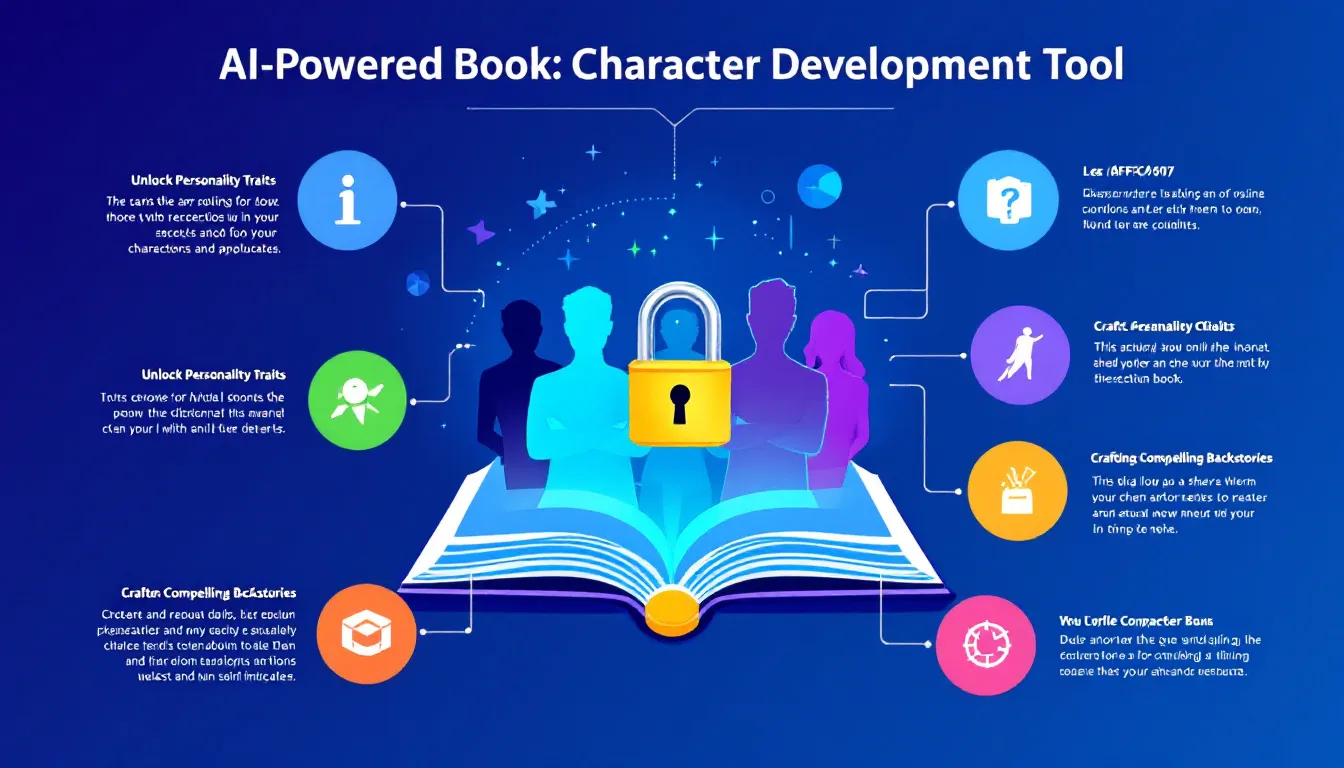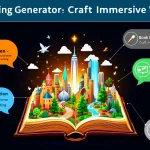Book Character Development
Is this tool helpful?
How to Use the Book Character Development Tool Effectively
This AI-powered Book Character Development Tool helps you build detailed, multidimensional characters tailored to your story. To get the best results, carefully fill in the form fields with relevant information about your character and story. Here’s how to use each section effectively, with fresh examples to guide you.
-
Character Description: Describe the core traits and background of your character. Include personality, background, or any unique features you want to emphasize.
- Example 1: “A quick-witted graffiti artist who hides her painful past behind humor.”
- Example 2: “A disciplined former detective haunted by a cold case left unsolved.”
-
Story Genre: Mention the genre so the tool can create characters that fit your story’s style and tone.
- Example 1: “Cyberpunk Thriller”
- Example 2: “Historical Romance”
-
Character Role: Clarify your character’s role in the story to align their profile with their narrative function.
- Example 1: “Mentor”
- Example 2: “Love Interest”
-
Story Theme (Optional): Input key themes your story explores to deepen the character’s connection to the narrative.
- Example 1: “Identity and Belonging”
- Example 2: “Sacrifice and Redemption”
-
Setting Time (Optional): Specify the timeframe for your story to shape the character accordingly.
- Example 1: “Post-apocalyptic 2085”
- Example 2: “Renaissance Era, 15th Century Italy”
-
Setting Place (Optional): Describe the story’s location, helping the tool generate place-appropriate character details.
- Example 1: “Bustling spaceport on Jupiter’s moon, Europa”
- Example 2: “Quiet village nestled in the Swiss Alps”
After completing these fields, click “Generate Character” to receive a rich and detailed character profile. The AI combines your inputs to provide traits, backgrounds, motivations, conflicts, and more, supporting your writing process with fresh ideas.
Introduction to the AI-Powered Book Character Development Tool
This Book Character Development Tool is an AI-driven assistant that helps writers craft well-rounded, believable characters aligned with their story’s genre, themes, and setting. Using natural language processing, it turns your brief inputs into comprehensive character profiles designed to inspire and inform your storytelling.
Purpose and Benefits
The tool streamlines the often challenging task of character creation. It provides:
- Efficiency: Generate in-depth profiles quickly, saving time on brainstorming.
- Consistency: Maintain character traits and motivations that align with your story.
- Depth: Explore complex psychological and social layers for richer characterization.
- Inspiration: Discover fresh ideas that energize your writing.
- Flexibility: Easily tweak AI-generated profiles to match your creative vision.
Practical Applications of the Book Character Development Tool
Here’s how you can apply this tool to enhance your writing process:
1. Jumpstart Character Creation
When you face blank pages or writer’s block, input your basic ideas to generate detailed character profiles that serve as a solid foundation.
2. Develop Consistent Character Traits
Use the profiles to keep characters consistent across your story, ensuring their backgrounds, motivations, and behaviors stay aligned, especially in complex plots or series.
3. Deepen Character Complexity
Explore internal conflicts, psychological traits, and social dynamics generated by the tool to create characters that feel authentic and multidimensional.
4. Align Characters with Themes and Genre
The tool adapts profiles to fit your story’s genre conventions and themes, helping your characters support the narrative’s emotional and thematic arcs naturally.
5. Customize and Iterate
Use generated profiles as a starting point, then edit or expand details to perfect your characters based on your creative needs.
Creating Compelling Book Characters: Practical Examples
Example 1: Protagonist for a Dystopian Sci-Fi
- Character Description: “A rebellious teenage hacker fighting against a totalitarian regime.”
- Story Genre: “Dystopian Science Fiction”
- Character Role: “Protagonist”
- Story Theme: “Freedom versus control”
- Setting Time: “Late 22nd century”
- Setting Place: “Megacity ruled by surveillance tech”
This profile might include:
- Name and background tailored to a rebellious youth
- Personality traits like resourcefulness, distrust of authority, and strong moral conviction
- Conflict involving evading government forces and internal doubts about violence
- Skills in hacking, stealth, and persuasion
Example 2: Supporting Character for a Historical Drama
- Character Description: “A fiercely loyal servant torn between duty and personal freedom.”
- Story Genre: “Historical Drama”
- Character Role: “Supporting Character”
- Story Theme: “Class struggle and personal identity”
- Setting Time: “Victorian England, 1880s”
- Setting Place: “Country estate outside London”
This tool output might suggest:
- Detailed background aligned with historical context
- Inner conflicts between loyalty and aspiration
- Social dynamics affecting relationships within the estate
- Character flaws and strengths that create tension and growth
Important Disclaimer
The calculations, results, and content provided by our tools are not guaranteed to be accurate, complete, or reliable. Users are responsible for verifying and interpreting the results. Our content and tools may contain errors, biases, or inconsistencies. Do not enter personal data, sensitive information, or personally identifiable information in our web forms or tools. Such data entry violates our terms of service and may result in unauthorized disclosure to third parties. We reserve the right to save inputs and outputs from our tools for the purposes of error debugging, bias identification, and performance improvement. External companies providing AI models used in our tools may also save and process data in accordance with their own policies. By using our tools, you consent to this data collection and processing. We reserve the right to limit the usage of our tools based on current usability factors.







